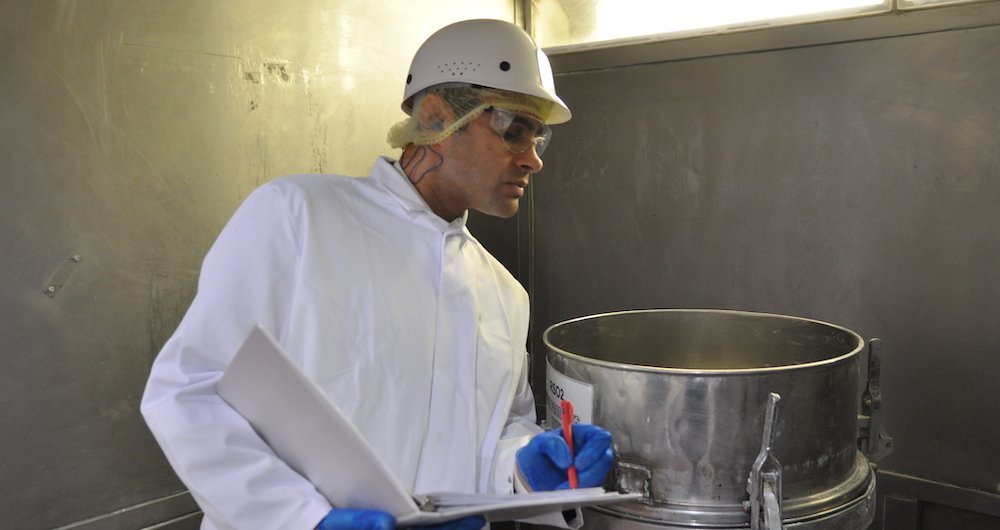Posted by Zosi Team

Prerequisite programs, or PRPs, are essential to the development of effective HACCP systems. In theory, PRP’s act as the foundation of this system – the stronger a facility’s foundation, the stronger its food safety plan.
Thus, PRPs provide the basic environmental and operating conditions necessary to produce safe and wholesome food. The key is that these PRP’s are not only well documented, but properly implemented and monitored to ensure compliance at all times, by employees and visitors alike.
When we utilize PRPs properly, they keep several factors from becoming severe issues in your facility that could eventually impact food safety. Historically, failures of PRP’s in sanitation and labeling areas cause significant foodborne illness outbreaks and product recalls.
This blog serves as an introduction to what HACCP‘s prerequisite programs may look like in your manufacturing and processing facility.
Pest Control
Lack of pest activity in a facility is the key indicator of a successful pest control program. Pest Control Operators (PCO) must be licensed and insured. Service reports should provide adequate detail of the services provided, such as pesticides applied, including dosage rate, quantities applied and treatment location. Facilities must produce Safety Data Sheets (SDS) and sample labels for pesticides and rodenticides. Companies need to provide in-depth evaluations of their pest control programs, typically involving trend analysis by device type or verification procedures.
Foreign Material Control
Foreign material control is a crucial HACCP prerequisite program that starts with knowing what your suppliers are doing to prevent foreign material contamination in their raw materials. Internally, procedures must be in place to prevent contamination from metal, plastic, wood, glass and other foreign materials, Foreign material detection devices such as metal detectors, X-rays, magnets, screens and others should be used where appropriate to remove potential contaminants. Routine inspection of facilities should be completed assess potential sources of foreign material and mitigate the risk.
Storage
Storage is another PRP that requires documented SOPs, especially with temperature-sensitive ingredients. Beyond this, an adequate operational standard must be verified via internal audits or GMP inspections. The proper segregation of wet vs. dry ingredients and allergens is critical to this PRP. The storage of exposed or refrigerated ingredients such as vegetables, fresh fish, milk, and more in distribution centers could become a Preventive Control. Such operations must conduct adequate hazard analysis to determine the risk levels and identify adequate control measures.
Returned Product
If a facility accepts returns, they must document an evaluation process. Due to the risk returns present, product and packaging standards must be defined to ensure that items are intact and not expired or contaminated. Also, documentation should include inspection procedures, responsibilities, and records. In general, it is not wise to receive returned products since you cannot be certain what happened to that product when it was out of your direct control.
Preventive Maintenance PRPs
Preventive Maintenance PRPs must record that your equipment does not present contamination issues brought about by lack of maintenance or during the maintenance activities themselves. Repairs, in particular, present stringent PRP requirements. Records of each repair, what needs to be cleaned or sanitized before and after the repair, and any mobile equipment inspection and tools are necessary for compliance. Preventive maintenance programs must also include infrastructure, outside grounds, and supporting areas such as steam and engine rooms as applicable. Maintenance employee GMP procedures are also a key PRP to assure product and product contact surfaces are not contaminated during repairs or PM activities.
Chemical Controls
Chemical controls assure adequate segregation of chemicals, food ingredients, and materials. Chemical Control Programs must include controlled access to chemical storage areas with restricted access. Knowing where your chemicals are at all times, and that they will not present contamination issues, is crucial to chemical control.
The storage and handling of food grade or food contact cleaning chemicals must be done in a manner that prevents such products from being contaminated by conventional lubricants and cleaning agents. In addition, proper labeling of all chemicals in all containers is a key component of this program. Safety Data Sheets (SDS) must be on file and available for all chemicals in the facility.
Environmental Monitoring Programs
An Environmental Monitoring Program (EMP) that monitors for the pathogens of concern (E. Coli, Salmonella and/or Listeria) is a key PRP, and in some cases the EMP becomes a key element of a Sanitation Preventive Control at FDA regulated sites producing Ready-To-Eat products (RTE). In USDA regulated facilities, these plans must be science-based per FSIS Directive 10,240.4, and results must be shared with the USDA to prevent and intensified inspection. Typically, EMPs utilize a three-tier sampling program by zone.
Typically, EMPs utilize a four-tier sampling program by zone. Zone 1 includes food contact surfaces. Zone 2 includes indirect equipment framework and over product areas. Zone 3 includes processing area environment. Zone 4 includes common areas outside of processing rooms. The EMP must be risk based with supporting documentation available to justify the type sampling, frequency of sampling and sites to be sampled.
Employee Training
Employee training is one of the most critical programs included in PRPs. Without effectively training employees, both your HACCP plan and PRPs remain at-risk. Food safety and personal hygiene training, as well as job specific training, are mandatory topics as per FSMA’s Qualified Individual training requirements. Employees need to be trained upon hiring and have access to routine refreshers to remain in compliance. Key training concepts should be reinforced with visual reminders throughout the facility, encouraging employees to follow food safety and HACCP plans. For information on accredited HACCP training for all levels, click here.



 Never Miss an Update.
Never Miss an Update. 